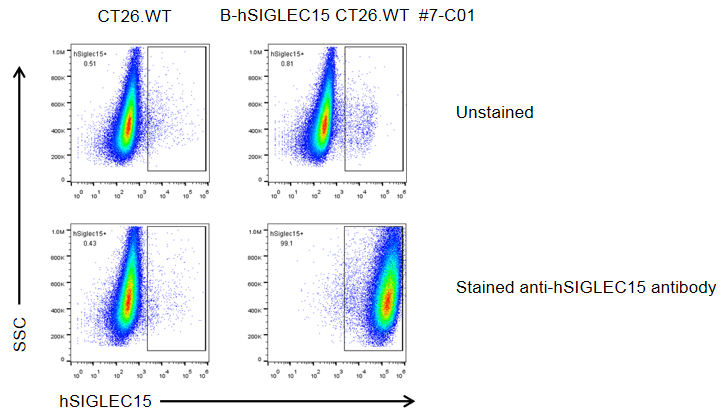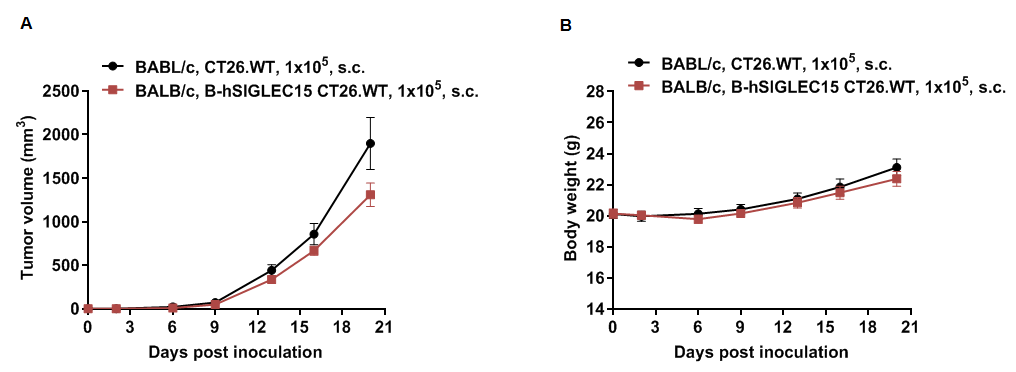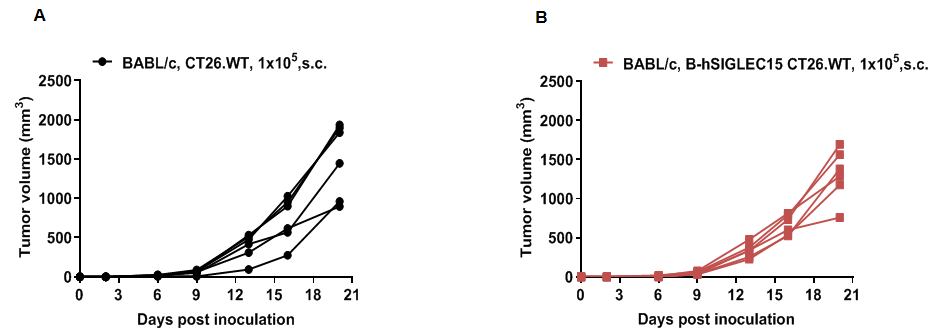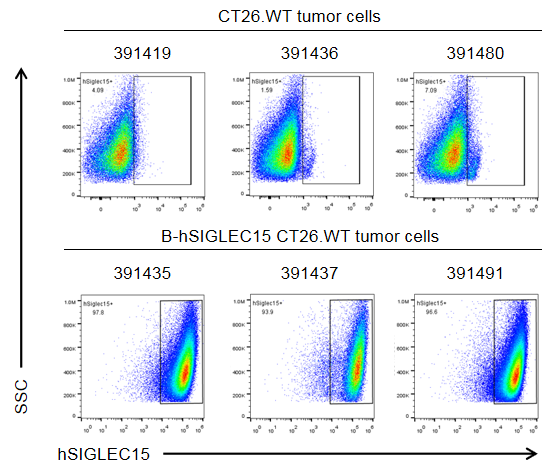B-hSIGLEC15 CT26.WT
|
Common name |
B-hSIGLEC15 CT26.WT | Catalog number | 322216 |
| Aliases |
CD33L3, HsT1361, SIGLEC-15 |
Disease | Colon carcinoma |
|
Organism |
Mouse |
Strain | BALB/c |
| Tissue types | Colon | Tissue | Colon |
The mouse Siglec15 coding sequence was replaced by human SIGLEC15 coding sequence in B-hSIGLEC15 CT26.WT cells. Human SIGLEC15 is highly expressed on the surface of B-hSIGLEC15 CT26.WT cells.
Gene targeting strategy for B-hSIGLEC15 CT26.WT cells. The partial exon 3~3’UTR of mouse Siglec15 gene were knocked out and human SIGLEC15 CDS was insert into mouse Siglec15 exon 3 in B-hSIGLEC15 CT26.WT cells.

SIGLEC15 expression analysis in B-hSIGLEC15 CT26.WT cells by flow cytometry. Single cell suspensions from wild-type CT26.WT and B-hSIGLEC15 CT26.WT cultures were stained with species-specific anti-SIGLEC15 antibody. Human SIGLEC15 was detected on the surface of B-hSIGLEC15 CT26.WT cells but not wild-type CT26.WT cells. The 7-C01 clone of B-hSIGLEC15 CT26.WT cells was used for in vivo experiments.

Subcutaneous homograft tumor growth of B-hSIGLEC15 CT26.WT cells. B-hSIGLEC15 CT26.WT cells (1x105) and wild-type CT26.WT cells (1x105) were subcutaneously implanted into BABL/c mice (female, 8-week-old, n=6). Tumor volume and body weight were measured twice a week. (A) Average tumor volume ± SEM. (B) Body weight (Mean± SEM). Volume was expressed in mm3 using the formula: V=0.5 X long diameter X short diameter2. As shown in panel A, B-hSIGLEC15 CT26.WT cells were able to establish tumors in vivo and can be used for efficacy studies.

B-hSIGLEC15 CT26.WT tumor cells growth of individual mice. B-hSIGLEC15 CT26.WT cells (1x105) and wild-type CT26.WT cells (1x105) were subcutaneously implanted into BABL/c mice (female, 8-week-old, n=6). As shown in panel, B-hSIGLEC15 CT26.WT cells were able to establish tumors in vivo and can be used for efficacy studies.

B-hSIGLEC15 CT26.WT cells were subcutaneously transplanted into BABL/c mice (n=6), and on 21 days post inoculation, tumor cells were harvested and assessed for human SIGLEC15 expression by flow cytometry. As shown, human SIGLEC15 was highly expressed on the surface of tumor cells. Therefore, B-hSIGLEC15 CT26.WT cells can be used for in vivo efficacy studies of novel SIGLEC15 therapeutics.







